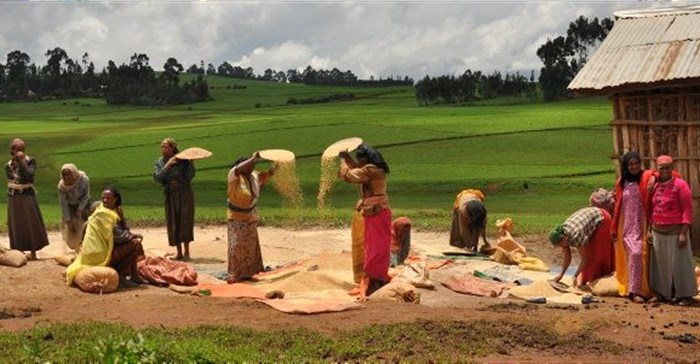Heineken on the ins and outs of local sourcing in Africa

By sourcing locally, multinationals can save on import costs, preserve foreign exchange and contribute to the economic development of the continent.
Yet, buying raw materials from smallholder farmers is not done overnight. Rather, it is the end-result of a multi-faceted commitment that can span up to 10 years.
Not as easy as opening the brewery door
Throughout the continent, the company sources about 50% of its agricultural needs locally, including from approximately 150,000 smallholder farmers. The brewer aims to increase that to 60% by 2020, according to Paul Stanger, Heineken’s local sourcing director for Africa and the Middle East.
Beer is typically made from malted barley, hops, yeast, and water (for most lagers), but other ingredients could include sorghum, rice and maize or even cassava. All these crops, with the exception of some varieties of barley and hops, are grown in Africa by smallholder farmers.
In fact, in Sierra Leone, the price of sorghum has been more stable than imported malted barley and Sierra Leone Brewery Limited (SLBL), a member of the Heineken Group, have introduced a new beer brand, Salone, made from 100% home-grown sorghum.
Sourcing these goods from local farmers is not easy according to Stanger: “We used to think you could just open the door of the brewery and say that you want to buy sorghum or maize or rice and it would come. But unfortunately that is not the case.”
Brewers have to create a value chain from farmer to market, he noted. This can include the establishment of collection centres, connecting farmers with logistics companies and processors, and training producer associations.
It also encompasses teaching farmers in improved agricultural practices, assisting them to gain access to better-quality seeds, fertiliser and micro-financing, and organising them into collective groups so that business dealings are less fragmented.
Heineken initially estimated that it would take three to five years to set up a value chain, but experience has shown that it can take as much as 10 years to secure sustainable local supply. For example, SLBL has been working with sorghum farmers since 2006 and there is still much to be done.
Many of the local sourcing projects are public-private partnerships, which are led by an appointed NGO, which uses on-the-ground experience and knowledge to find, organise and connect the relevant parties needed to create a value chain. But challenges remain.
“We talk about this as partnering for growth in Africa. It requires time and perseverance. We have very successful years, but we also have quite difficult years and you need to be prepared to push through that … it is not an easy journey,” said Stanger.
Why not go 100% local?
Sourcing 100% of raw materials on the continent is not possible at the moment. Some vital ingredients for the company’s beers are still not widely available in Africa.
“We can grow malt barely in a few countries in Africa such as South Africa, Ethiopia and Egypt. But in many others, we have not found the right varieties of barley to grow yet,” explained Stanger. “So for the foreseeable [future] we will need to import some malted barley.”
The same goes for hops. A small amount of hops is grown in South Africa, but the rest is imported from Europe and North America. “On the African continent, certain things are just not commercially viable as crops,” said Stanger.
The quality of raw materials, and the limited availability of financing for smallholder farmers are also two major problems.
“What I see too often in Africa is that banks are interested in funding big infrastructure projects, but many of them view agriculture as too risky and too fragmented. We rely really heavily on our partners in micro-financing … and they do a fantastic job. But their resources are limited and financing for farmers continues to be a big challenge across all African agriculture,” Stanger explained.
Additionally, agribusiness success is often easier said than done. If each country’s unique market conditions and challenges are not properly managed, the cost of locally-produced goods can turn out to be higher than that of imports.
Source: How we made it in Africa

How we made it in Africa, established in April 2010, is an award-winning online business publication aimed at African business people as well as foreign investors with an interest in the continent.
Go to: http://www.howwemadeitinafrica.com





















